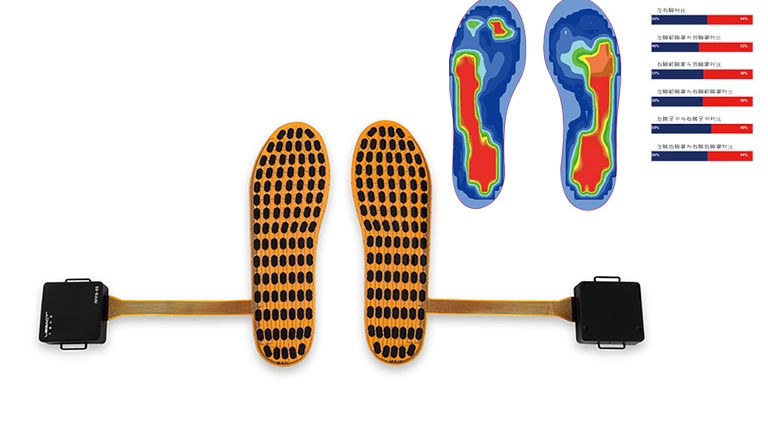With the continuous advancement of technology, smart wearable devices have become an indispensable part of modern life. Among these devices, smart insoles are gaining increasing attention for their ability to provide real-time gait analysis, health monitoring, and exercise guidance. Thin-film pressure sensors, as the core component of smart insoles, play a crucial role due to their lightweight, sensitivity, and cost-effectiveness.
Working Principle of Thin-Film Pressure Sensors
Thin-film pressure sensors mainly measure pressure changes to sense the pressure distribution of objects. Their working principle is typically based on changes in resistance, piezoelectric effect, or capacitance. When external pressure is applied to the sensor surface, the thin-film material deforms, altering its electrical properties (such as resistance or capacitance). These changes are then converted into measurable electrical signals. After processing, these signals can accurately reflect the magnitude and distribution of the pressure.
Structure and Functions of Smart Insoles
Smart insoles generally consist of multiple thin-film pressure sensors, a signal processing module, a data transmission module, and a power source. The following are their main functions and implementations:
1. Real-time Gait Analysis
With thin-film pressure sensors, smart insoles can monitor pressure changes in different areas of the foot in real-time, allowing for gait analysis. This is significant for athletes’ training and rehabilitation, helping them optimize their gait and reduce the risk of injury.
2. Health Monitoring
Smart insoles can also be used to monitor the user’s health condition. For example, by long-term monitoring of foot pressure changes, smart insoles can detect early foot diseases (such as plantar fasciitis) or assess the risk of foot ulcers in diabetic patients.
3. Exercise Guidance
For fitness enthusiasts and athletes, smart insoles can provide personalized exercise guidance. By analyzing gait data, smart insoles can offer suggestions on adjusting stride and improving posture, helping users enhance exercise effectiveness and avoid unnecessary injuries.
Advantages of Thin-Film Pressure Sensors in Smart Insoles
1. High Sensitivity
Thin-film pressure sensors can accurately detect slight pressure changes, making them suitable for detecting subtle pressure distribution on the foot, thereby providing precise gait analysis and health monitoring.
2. Lightweight and Flexible
Typically made from flexible materials, thin-film pressure sensors are lightweight and flexible. Embedding them into insoles does not add weight or affect wearing comfort.
3. Cost-Effective
Compared to other types of pressure sensors, thin-film pressure sensors have lower manufacturing costs, making them suitable for mass production. This allows smart insoles to enter the market at relatively low costs, benefiting more consumers.
Challenges and Future Development
Despite the numerous advantages of thin-film pressure sensors in smart insoles, there are still some challenges. For instance, improving the durability and stability of the sensors to withstand long-term and high-frequency use is crucial. Additionally, effectively processing and analyzing the vast amount of gait data is another problem that needs to be addressed.
In the future, with advancements in material science and data processing technology, the application of thin-film pressure sensors in smart insoles will become more extensive and in-depth. We can anticipate the emergence of more intelligent and personalized smart insoles, further enhancing our health management and quality of life.
Conclusion
As a key technology in smart insoles, thin-film pressure sensors are driving the development of smart insoles due to their high sensitivity, lightweight, and cost-effectiveness. Although there are some challenges, with the continuous progress of technology, the application prospects of thin-film pressure sensors in smart insoles are broad and worth looking forward to.



